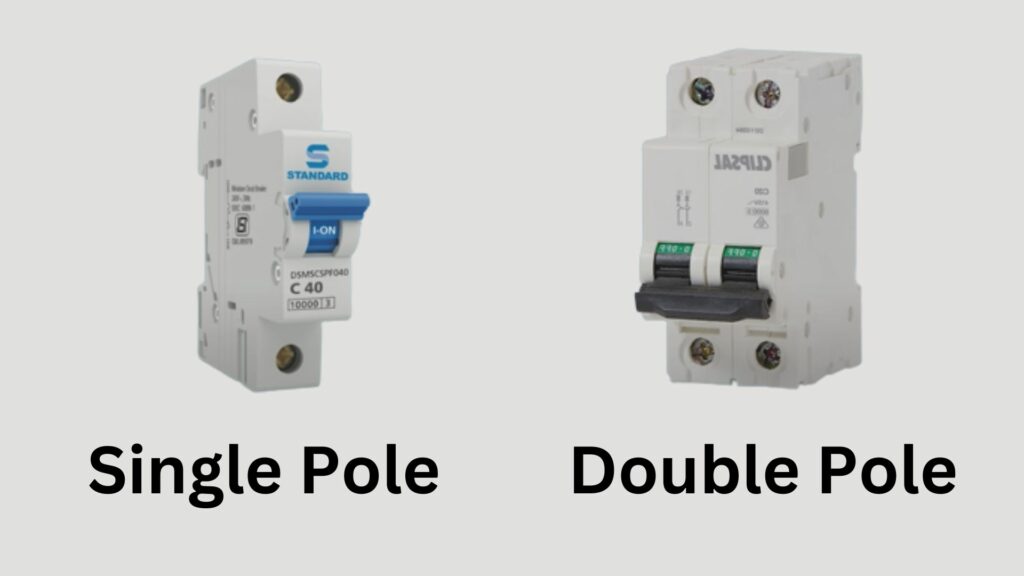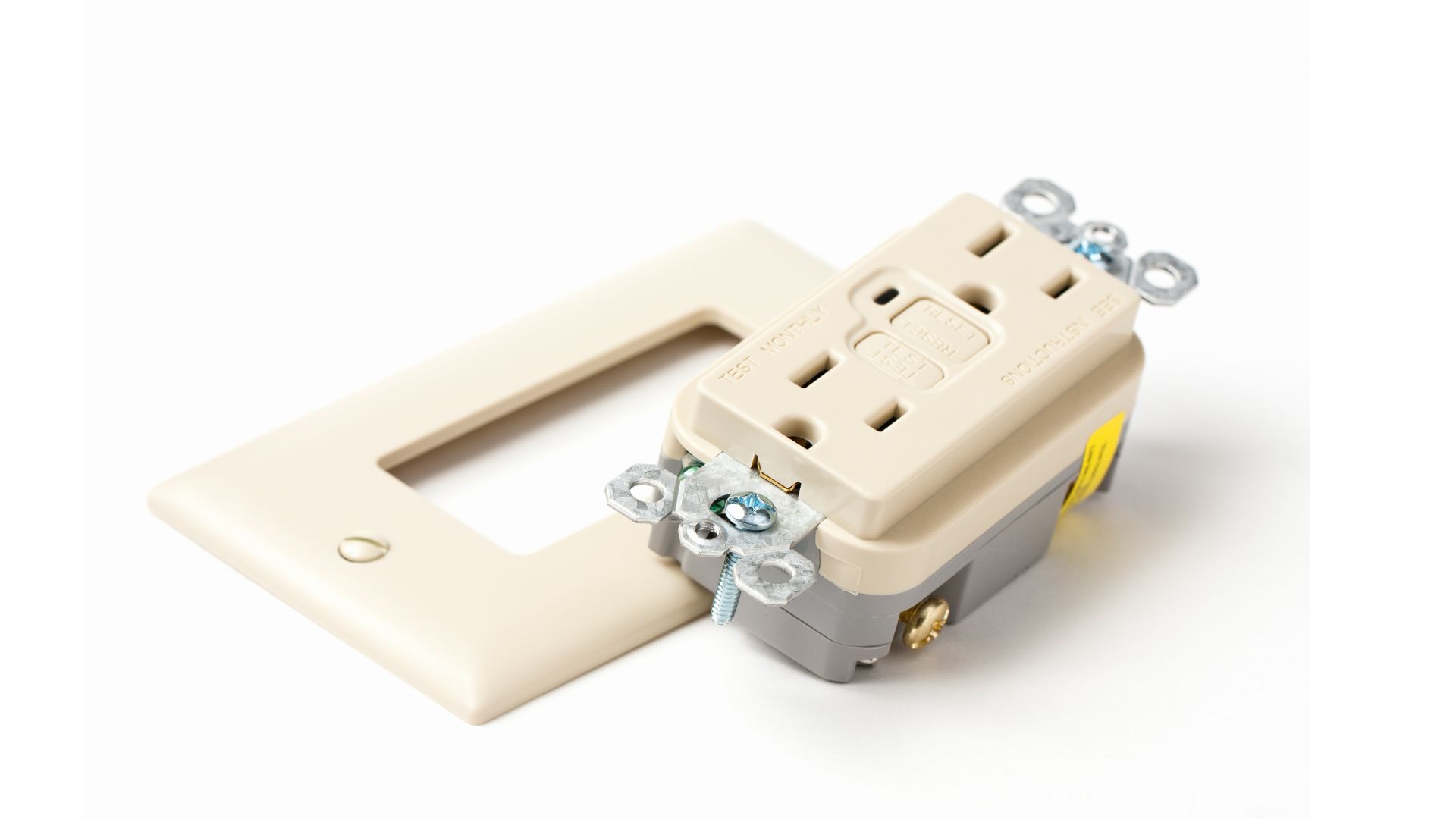The GFCI uses the hot and neutral to do its work. That raises a question. What happens when a GFCI shares a neutral? The guide below will tell you.
Can GFCI Outlets Share Neutral?
The GFCI protects against ground faults by looking at the incoming and outgoing currents. The differential current transformer looks for differences as small as 3 – 6 milliamps between the electricity flowing out on the hot wire and back via the neutral conductor.
It responds to an imbalance by opening the contacts and cutting the power. This is a good thing if a hair dryer falls in the bathtub during your bath. An imbalance will occur because of the current flowing out of the appliance and through the water and you. Fortunately, GFCIs react quickly.
While you may feel a shock, the GFCI will disconnect the receptacle before the current can kill you.
Why does this matter? You can see that a neutral conductor’s operations are integral to the GFCI’s work. You can also see that shared neutrals are a terrible idea. How can the incoming and outgoing current balance when the GFCI shares a neutral?
But does that mean it’s impossible for a GFCI to share a neutral? Not necessarily. Consider the following:
1). Shared neutrals are nothing new. You see them in multiwire branch circuits. A multiwire branch circuit has two hot conductors and a shared neutral. Electrical News typically finds them in hotels, offices, hospitals, and other commercial settings. They may also appear in apartment buildings.
2). Additionally, you need two-pole breakers. You’ve all seen single-pole breakers. Those are the thin 120V, 15, and 20A breakers you see in your home’s electrical panel. If you haven’t, check this picture.

These switches use one hot wire and one neutral wire.
Double-pole breakers have a distinct design. These 240V, 20 to 60A switches accommodate heavy-duty appliances such as electric ranges, dryers, and air conditioners. They have two hot wires sharing a neutral line.
While single-pole breakers disconnect one line, double-pole breakers control two lines, monitoring their workflow to determine whether it matches the acceptable parameters.
3). The neutral will carry the load imbalance between two circuits in a multiwire branch circuit. The load on the neutral is zero when the loads on the circuits are equal.
4). You can add GFCIs to multiwire branch circuits and double-pole breakers. This is the only acceptable way for a GFCI to share a neutral. However, you can’t approach this procedure carelessly.
I suggest you installing the device downstream at a point where the neutral branches off.
If you don’t know about multiwire branch circuit, check this video!
5). Don’t use neutrals from another circuit. A multiwire circuit has two hot lines on different phases and neutral amps subtracted from each other. Connecting to a neutral from another circuit leads to an overload. You will destroy the wire because the neutral lines don’t have fuse and circuit breaker protection.
6). You will see nuisance tripping when you add the shared neutral to the load side. Thus, I suggest you to place the shared neutral on the line side.
All in all, it isn’t feasible to use a shared neutral for a GFCI in the absence of a multi-wire branch circuit and a double-pole breaker.
Sharing Neutral VS Not Sharing A Neutral In GFCI – Pros & Cons
There’s no benefit to sharing a neutral on a GFCI because the device won’t work. It will trip incessantly until you take action. A shared neutral is only relevant when you’ve decided to configure a multi-wire circuit with a double-pole breaker. This brings its fair share of advantages and disadvantages:
- People use multi-wire circuits with shared neutrals for convenience.
- Sometimes, you find these setups in older homes. In other words, you don’t have a choice but to fit the GFCI into the pre-existing configuration.
- A multiwire branch circuit can reduce the number of copper wires you need.
- A multiwire branch circuit connects two circuits, which, in turn, allows you to switch them on and off simultaneously with one breaker.
- You need to disconnect all the circuit conductors to perform repairs on a multi-wire branch circuit. This is inconvenient because it disrupts the power supply in areas unrelated to the repairs. Unfortunately, de-energizing the equipment the multiwire circuit supplies is necessary to minimize the threat of electrocution and fires.
- Multiwire branch circuits are becoming less popular as of late because some businesses cannot afford to tolerate the outages these configurations attract. This is especially true in sensitive locations such as hospitals where power outages threaten human lives.
- Additionally, it takes too long to identify faults on a multiwire branch circuit.
- At the very least, this is no longer an acceptable means of saving wires. It is safer to install individual branch circuits and dedicate neutrals and disconnects to each circuit. This prevents a malfunction in one circuit from affecting the other circuits.
- Giving each underground branch circuit conductor a neutral takes the ‘Multiwire’ aspect out of the equation. You don’t need simultaneous disconnections. Also, troubleshooting is much easier. You can reduce the time and resources needed to perform installations, repairs, and maintenance.
- If the cost of copper wiring has made multiwire branch circuits more attractive, you can switch to aluminum.
As you can see, multi-wire branch circuits and double-pole breakers are a mixed bag. But they are necessary if you want the GFCI to share a neutral.
When Is The Best Time To Share Neutral VS When You Shouldn’t Share Neutral?
There’s no reason for a GFCI to use a shared neutral. This technology won’t work outside a multiwire branch circuit with a double-pole breaker. You should only tolerate a shared neutral if you just moved into a home where the circuits share a neutral, and you don’t have the financial means to change things.
What Does The Code Say About Sharing Neutral In GFCI?
The NEC mentions multiwire branch circuits. Some people call them ‘Edison Circuits,’ but the code uses ‘Multiwire Branch Circuit.’ The NEC permits shared neutrals. But you have to meet the relevant requirements. That includes installing a simultaneous disconnect (A device that disconnects all the phase conductors at the circuit’s point of origin).
Additionally, you want the conductors to originate from the same electrical panel (NEC 2020 210.4). Keep the local code in mind. The standards in some industries discourage shared neutrals. But the local code should have the final say. It supersedes the NEC.

